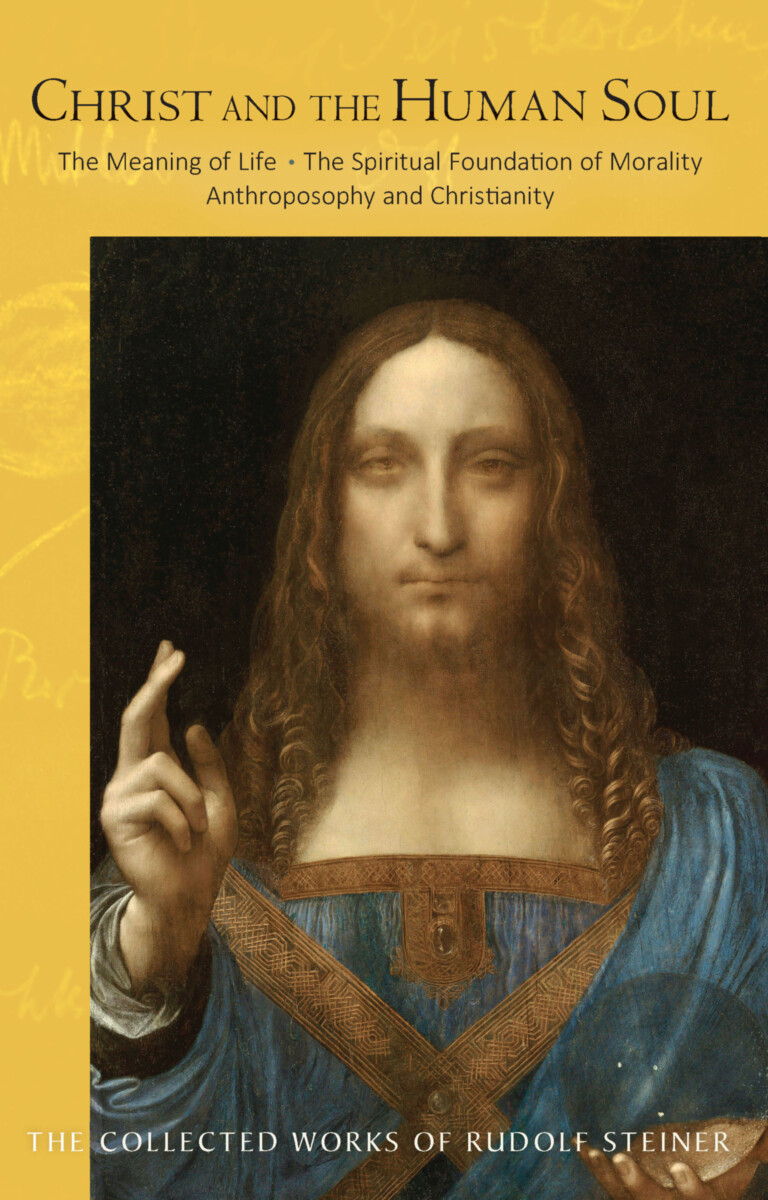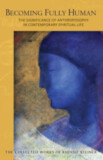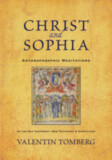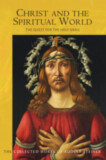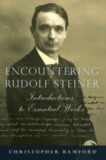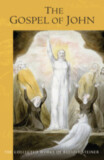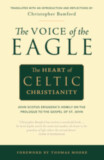Christ and the Human Soul
The Meaning of Life – The Spiritual Foundation of Morality – Anthroposophy and Christianity (CW 155)
- Publisher
SteinerBooks - Published
11th July 2023 - ISBN 9781621483199
- Language English
- Pages 288 pp.
- Size 6" x 9.25"
10 Lectures in Copenhagen and Norrköping, May 23–30, 1912, July 12–16, 1914 (CW 155)
“Spiritual science does not want to replace Christianity; rather, it aims to be the instrument through which the meaning of Christianity can be grasped. And one thing that will become particularly clear through spiritual science is that the being whom we call Christ must be recognized as the center of life on earth, and that what we call the Christian faith is the ultimate religion, the eternal religion for the future of the earth.” — Rudolf Steiner (July 13, 1914)
This collection of lectures from 1912 and 1914 offers a deepened understanding of the being of Christ, the divine Logos, in his connection with individual human souls. From religious figures such as John the Baptist and Saint Francis to the twentieth-century poet Christian Morgenstern, these lectures reveal how Christ works with and through all who seek him. The Pauline statement, “Not I, but Christ in me,” becomes an inner guide by which each human soul can find a way to intimate union with the Christ being. It is he who has the power to make our ideals and goals in life—if they are worthy—into true seeds of future reality.
The time of faith has come and gone. Christ needs our conscious striving, our effort to understand, within the heart’s deep core, his ongoing presence and activity in the further evolution of our spiritual Earth and in our journey toward humanness. These lectures are a comfort and a signpost for the soul to walk the inner path of communion with Christ for the healing and redemption of the earth. We may be able, in the end, to redeem the karma accrued by our own individual souls, but for our spiritual work to be fruitful for all humanity it must be brought into connection with Christ. “What we take into ourselves in such a way that it is done from the perspective of ‘Not I’— this is what Christ makes into a common possession for all humanity” (July 14, 1914).
“To know Christ means to undergo the school of selflessness.... Under the influence of materialism, the selflessness of humanity was lost in a way, as will be understood in future ages of humanity. However, through absorption in the Mystery of Golgotha, the penetration of the knowledge of the Mystery of Golgotha with our whole feeling and soul being, we can once again acquire a culture of selflessness. We can come to understand that what Christ did for the development of the Earth is contained in the fundamental impulse of selflessness, and that what he can become for the conscious development of the human soul is the school of selflessness!” — Rudolf Steiner (June 1, 1914)
To read these lectures is to strike out on the heart’s path of fellowship with the living Christ.
This book is a translation from German of Christus und die Menschliche Seele. Über den Sinn des Lebens – Theosophische Moral – Anthroposophie und Christentum (GA 155, 3rd ed.), Rudolf Steiner Verlag, Dornach, Switzerland, 1994. Cover image: Salvator Mundi (1499–1510) by Leonardo da Vinci.
C O N T E N T S:
Introduction by Bastiaan Baan
PART I: THE MEANING OF LIFE
1. Copenhagen, May 23, 1912: Questions regarding the meaning of existence. Growth and decay in nature and in human life. The Hebrew legend of the creation of the human being. Buddha’s teachings of suffering. The earth as the body of spiritual beings and the relationship between humanity and its earthly environment. The Eastern worldview is based on the individuality as it moves through incarnations, on the bodhisattvas; the Western worldview is based on the personality. Spiritual science augments personality with individuality. Elijah, John the Baptist, Raphael: the same individuality lives in them proclaiming the Christ impulse. Raphael’s painting. The influence of his father, who died at an early age, on his artistic development. Raphael reincarnates as Novalis.
2. Copenhagen, May 24, 1912: Growth and decay of innumerable seeds, which do not reach maturity. The realm of immeasurable vision possibilities and selecting, through inspiration, those images that express a spiritual reality. How this world of visions must be connected to the external world so that the plant and animal kingdoms may advance further. The human being as participant in the world process. Divine consciousness. Earthly culture: its progression and the Christ impulse. The human soul as the arena where divine aims are to be attained.
PART II: THE SPIRITUAL FOUNDATION OF MORALITY
1. Norrköping, May 28, 1912: Instinctive morality and moral principles. Schopenhauer’s saying: Preaching morality is easy, founding morality is difficult. Introduction to the source of moral impulses. Indian devotion, Nordic courage. The new moral impulses of the fifth post-Atlantean cultural epoch. Hartmann von Aue, “Poor Henry.” The moral work of Francis of Assisi. Youthful wastefulness and squandering of moral forces. The healing effect of the impulse of morality.
2. Norrköping, May 29, 1912: The division into castes in ancient India and the class divisions of the ancient European population. Causes of immorality among the lower strata of the European peoples. Strictest secrecy of wisdom-treasures in the European mysteries. Difference between racial development and soul development. The extinction of the lower European strata of the population. Demons of disease and leprosy. Colchian mysteries on the Black Sea: Buddha-impulse and Christ-impulse. Francis of Assisi as pupil of this school in an earlier incarnation. The working of the Christ impulse in Francis of Assisi as the origin of his moral strength. On the physical ancestry of the Apostles. Morality in human beings is a primordial divine gift. Immorality as a result of mental aberrations and their redress. The virtues in the teachings of Plato.
3. Norrköping, May 30, 1912: The destructive evil in human evolution. Finding the right attitude toward evil by establishing a balance between the two aberrations of asceticism and egotism. The old instinctive virtues and the new virtues to be attained. Aristotle: the mean between the too-much and the too-little. The virtue of the sentient soul: instinctive wisdom is transformed into conscious truthfulness through the Christ impulse; the virtue of the intellectual or mind soul: fortitude, bravery is trans-formed into love; the virtue of the consciousness soul: instinctive moderation, temperance becomes life-wisdom. Interest as a precondition for understanding and moral conduct. Anthroposophy stimulates interest. Moral impulses working together with the Christ-impulse in the future human evolution. The future sheaths of the Christ-impulse: the formation of the astral body of Christ through acts of faith and wonder, the etheric body through acts of love, the physical body through acts of conscience.
PART III: CHRIST AND THE HUMAN SOUL
1. Norrköping, July 12, 1914: The two goals of the evolution of the human soul: implanting of free will in human beings and the gift of being able to distinguish between good and evil, beautiful and ugly, true and false. The scene in Jerusalem at the time of the crucifixion. The human being’s connection to sin and guilt and the coming of Christ to the earth. Christ and ancient Judaism. Moses and Christ. Fundamental character of the Old Testament is will; of the pagan mysteries, wisdom. The darkening of the soul and the summons: “Know thyself!” The meaning of immortality and passing through the gate of death with consciousness. Reference to the words spoken by Job. Love and individuality. Through the Mystery of Golgotha, an extra-earthly being united himself with the earth.
2. Norrköping, July 14, 1914: Trust in the ongoing reality of the world. Souls after death and the uncertainty regarding their ideals. Examples of Christian Morgenstern and Maria Strauch-Spettini and the impulses received from them out of the spiritual world after their death. Spiritual Science permeated with Christ will be a seed in the evolution of humanity. Ideals permeated with Christ become seeds for the future. If Christ permeates the fruits of our knowledge, then they work not for ourselves alone, but for the whole of humanity. “Not I, but Christ in me.” The connection of Christ to the human soul; its effects in the human being’s life on earth and between death and rebirth. Christ bears our ideals into the future world.
3. Norrköping, July 15, 1914: The concepts of sin and guilt as an individual fact and as an objective fact. The malefactors on the right and left of Christ on the cross. Lucifer and Ahriman: on the one hand opponents of the gods and, on the other, necessary for the whole cosmic order when their forces operate on their legitimate level. Earthly judgment and higher judgment. Christ as a being of the kingdom of heaven, not of the earth. Individual sin is not exempt from karmic justice, but Christ takes on the objective consequences of sin and guilt. The woman taken in adultery. Christ writes her sins into the earth and forgives.
4. Norrköping, July 16, 1914: Truths as life force and cognition force. Christ became “akin to death” because cosmic evolution required that a god of the higher worlds go through death and become the leader of Earth evolution. The four ethers. Regions of the Music of the Spheres (chemical ether) and of cosmic life (life ether). These regions are to be restored for us through the coming of Christ. All human incarnations leave earth remnants. They are permeated by Christ. The Earth phase will be followed by the Jupiter phase, when two races, the good and the evil, will separate. Forgiveness of sins. Christ as the bearer of our sins.
PART IV: ANTHROPOSOPHY AND CHRISTIANITY
1. Norrköping, July 13, 1914 (public lecture): How thoughts and mental images are formed in spiritual science. Applying the natural-scientific way of thinking to spiritual science. The human being as an instrument of spiritual research. Concentration of thinking. Preparations for spiritual research. Separation of the soul-spiritual from the physical. Experiencing oneself outside the body. Connecting with spiritual beings. Getting to know the core of one’s own soul being, which goes through repeated earth lives. Investigating issues regarding humanity and its destiny. Spiritual science as an instrument for a deeper understanding of Christianity. The union of the cosmic Christ being with earthly humanity in the Mystery of Golgotha. The Mystery of Golgotha as the central event of earthly existence. Spiritual science brings about a religious mood in the soul.
Editorial and Reference Notes
Rudolf Steiner’s Collected Works
Significant Events in the Life of Rudolf Steiner
Index
Rudolf Steiner
Rudolf Steiner (b. Rudolf Joseph Lorenz Steiner, 1861–1925) was born in the small village of Kraljevec, Austro-Hungarian Empire (now in Croatia), where he grew up. As a young man, he lived in Weimar and Berlin, where he became a well-published scientific, literary, and philosophical scholar, known especially for his work with Goethe’s scientific writings. Steiner termed his spiritual philosophy anthroposophy, meaning “wisdom of the human being.” As an exceptionally developed seer, he based his work on direct knowledge and perception of spiritual dimensions. He initiated a modern, universal “spiritual science” that is accessible to anyone willing to exercise clear and unbiased thinking. From his spiritual investigations, Steiner provided suggestions for the renewal of numerous activities, including education (general and for special needs), agriculture, medicine, economics, architecture, science, philosophy, Christianity, and the arts. There are currently thousands of schools, clinics, farms, and initiatives in other fields that involve practical work based on the principles Steiner developed. His many published works feature his research into the spiritual nature of human beings, the evolution of the world and humanity, and methods for personal development. He wrote some thirty books and delivered more than six thousand lectures throughout much of Europe. In 1924, Steiner founded the General Anthroposophical Society, which today has branches around the world.


